Did you know that our brain flourishes when we take on tasks where the end results are unknown? Whether this involves an unexpected conversation, a game with several players or making art, these activities help the brain and memory work better. Often artists have an idea on how a particular work might turn out, but what they cannot predict is the trajectory their art practice will take. It is impossible to know what thing you might see or what experience might happen that will change your art.
Brice Marden, an American painter who passed away on August 10, 2023 was known mostly known for his calligraphic paintings that are in-between drawing and painting. However that is not how he started his art career. Initially he was viewed as a minimalist painter who did monochromes and geometric abstraction. Like many artists, Marden’s work took a few different and sometimes unexpected trajectories.
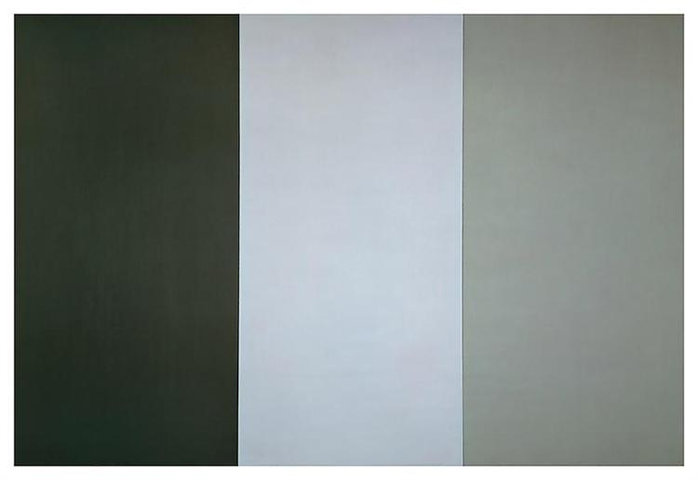
Early in his career Marden was considered an abstract minimalist painter. He never considered his work completely abstract, nor necessarily minimalist. The above painting from the “Grove Group” series was inspired by the colours of an olive tree grove he saw in Italy in 1971. The series consists of five paintings and together the colours conjure sea and sky, slate and trees. The paintings are all 6 x 9′ and the rectangular canvas in each painting is divided up in different ways -either vertical (as seen above) to suggest trees or horizontal to suggest landscapes such as the sea and sky.
Marden on his inspiration: Grove Group

1979, oil and graphite on Japanese clay-coated paper, 20.5″ x 19.5″
Marden also became interested in Greek architecture and antiquities in the 1970s and made several series of works based on this including the Hydra Group (above). Using concepts around minimalism and the grid, the Hydra Group is inspired by the basic post and lintel form of architecture often used in Greek temples.
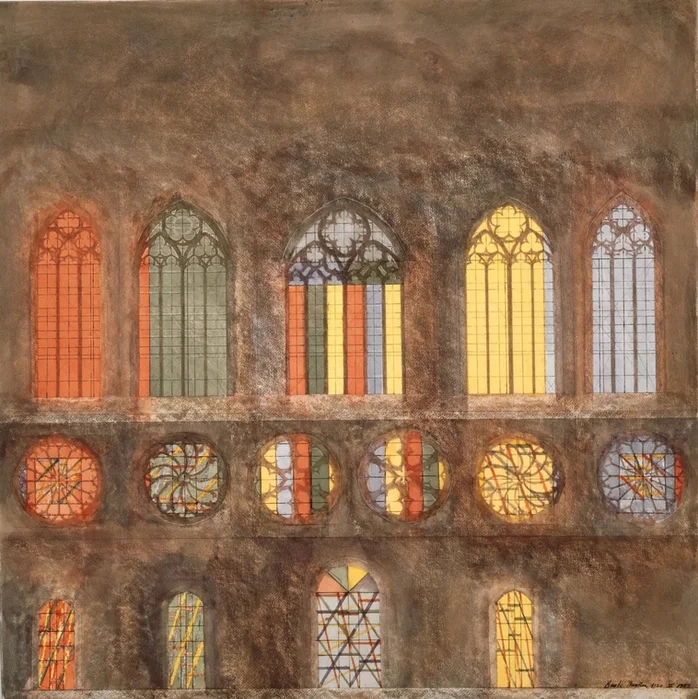
His interest in architecture continued into the late 1970s and early 1980s. In 1978 he was asked to submit a design proposal for the cathedral windows in Basel. The drawing above is one of his proposed designs.

While Marden’s cathedral windows design was not accepted, his proposal process resulted in a new direction for his work. This direction included a shift from monochromatic neutral toned paintings to works that included a range of brighter colours and the use of drawing lines in his paintings. Many paintings and drawings were developed from this “window series”.

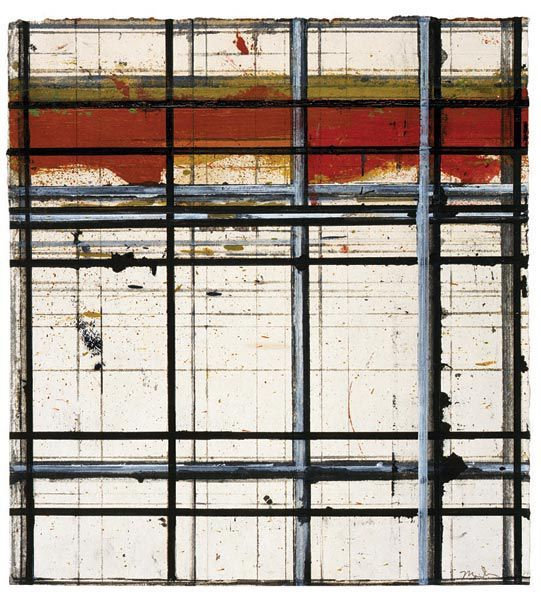
These window studies developed into abstract grid drawings with straight edges created by using masking tape. These geometric lines were contrasted with free-hand brush lines, paint drips and splatters. Expressionistic mark making was introduced to his more formal approach to geometry.
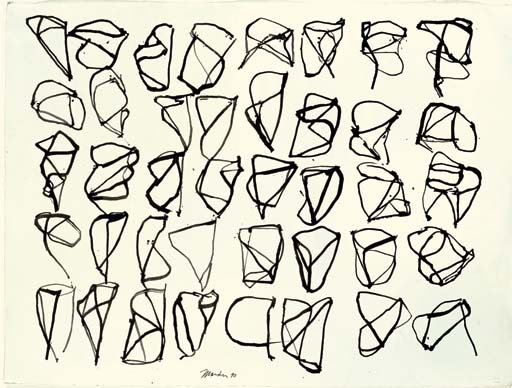
In the 1980s Marden made a trip to Japan and became fascinated with Japanese calligraphy and saw it as a form of drawing. He was not only interested in the marks but also the structure of how the words appeared on the paper, often in a grid-like formation. The above work is is part of Marden’s Cold Mountain series and it was his first venture into the signature style of drawings and paintings with undulating lines that he is known for today. This series was inspired by a collection of poetry attributed to Chinese poet Hanshan (Cold Mountain), who authored his texts during the 9th-century Tang Dynasty. It is interesting to note, that while Marden was looking at traditional calligraphy to inspire his work, 21st century contemporary Japanese calligraphers were influenced by Marden’s work and developed a new style based on a more free and gestural approach. This fascinating lecture Brice Marden Lines and Spaces, discusses the cross-cultural relationship between traditional and contemporary Japanese calligraphy.
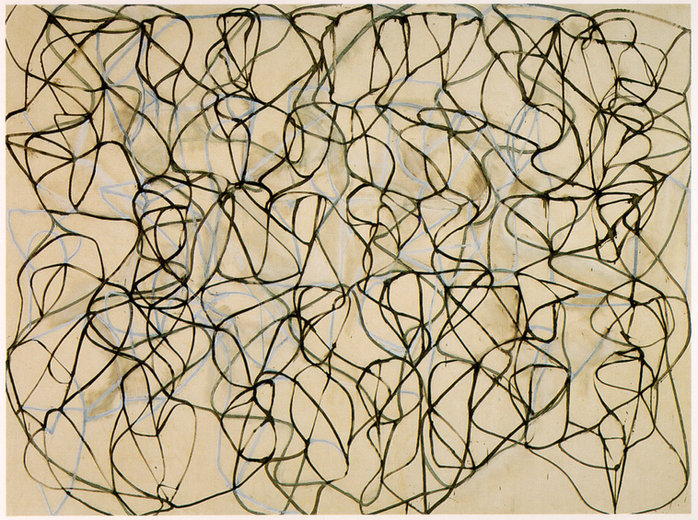
The Cold Mountain drawings developed into paintings. The drawings were done with a long stick and ink, however with the paintings, Marden wanted more control so he used a brush. Like calligraphy, his drawings were done as one-off mark making sessions. However his paintings always consisted of many layers of erasures and additions, sometimes taking a few years before Marden felt they were complete. He was interested in the pentimento or trace of the history of the process from start to finish. This linear approach to painting is something that stayed Marden for the rest of his life.

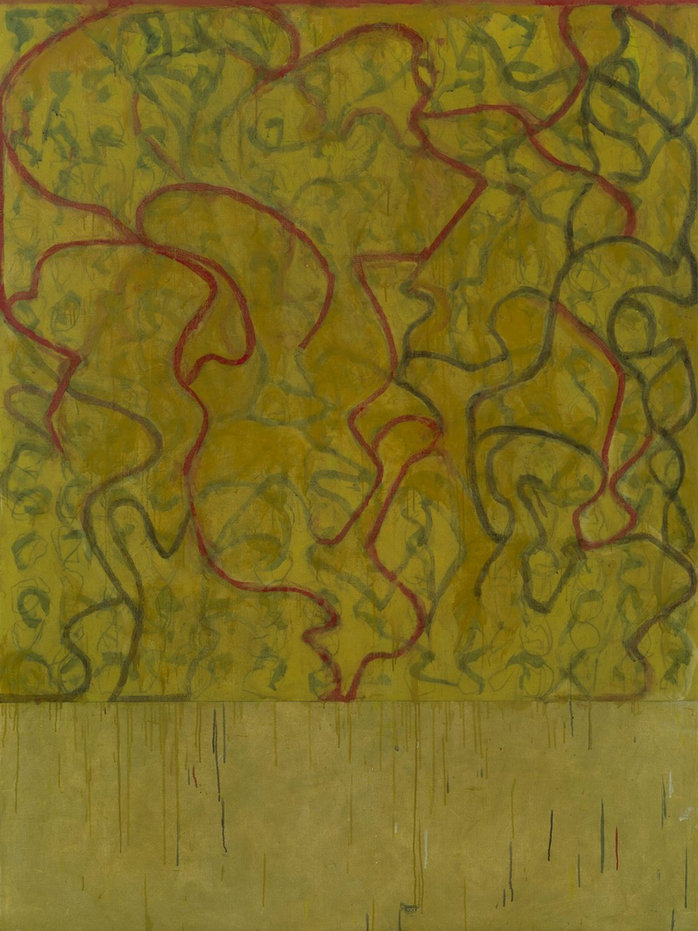
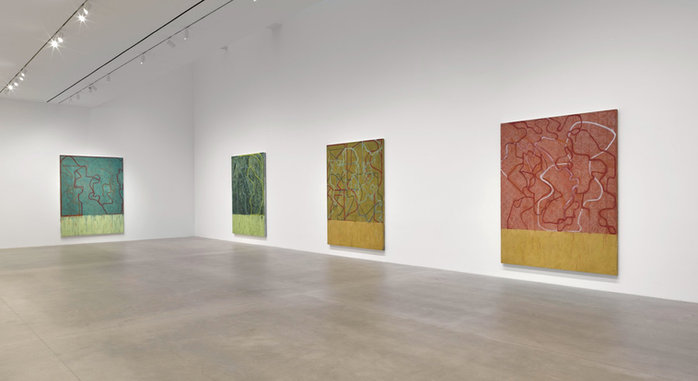
In Marden’s later works a deliberate reworking of the lines is juxtaposed with a more gestural approach to painting, letting the drips and messiness of the paint reveal itself as part of the process. You can see by the date of the painting Rowdy (2013-2021), that Marden is reworking the surface of previously made paintings and letting that history come through to the final surface. Throughout his art practice, Marden battled with the square format because he thought it was too perfect. He said nobody can make a square painting after Malevich’s Black Square. And yet, he was drawn to the form because of its perfection. His solution throughout many series of works was to put a square into a rectangular format, giving the work a geometric order that counteracts with the messiness of the dissolving linear forms.
I love studying the life work of an artist because it brings to light all the different directions an artist’s mind can go. Looking at the very first geometric abstract image of this essay, you can see some of the similarities to his later work, but it is unlikely Marden would have been able to imagine the direction his work would take over his lifetime.
The main thing is to always keep working (whether or not you are inspired to do so) and to observe the world around you, sketch, photograph, look at other art, read, take notes, and keep repeating that all over again. You too will be surprised where you might end up in a few years from now. The journey of an art practice is too much of an adventure to pass up. Keep working to find out where art will take you.